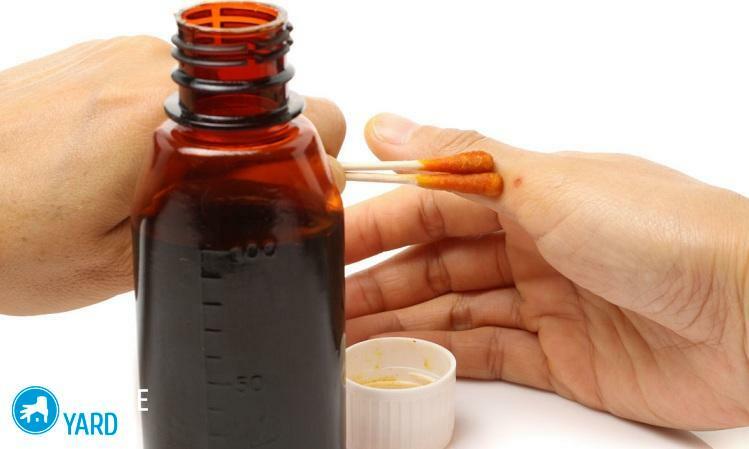Bulbous flowers for the garden got their name due to the thick stem, which has the shape of a tuber. These flowers are unpretentious, since in the bulb itself they contain all the trace elements necessary for proper development.
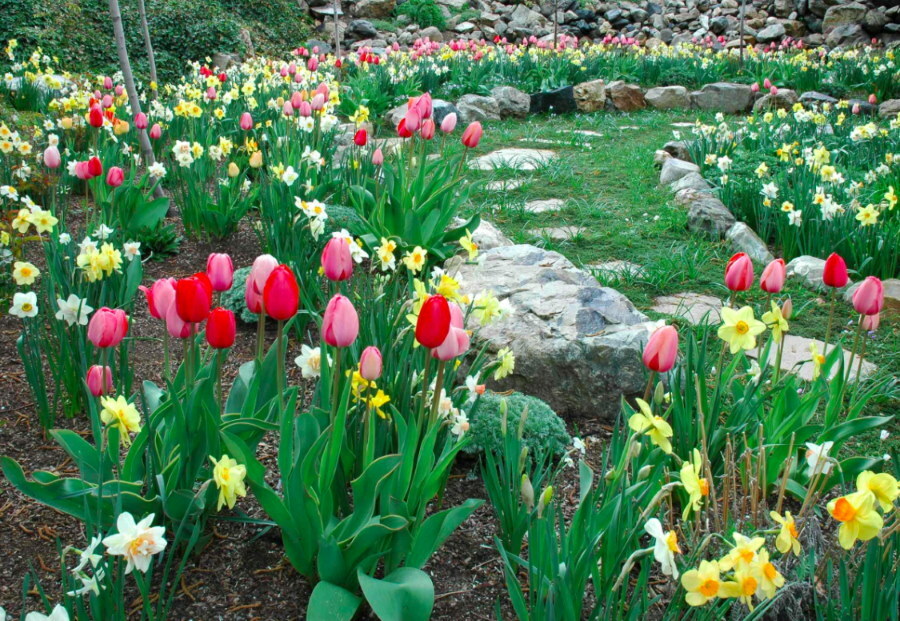
Bulbous ones wake up after winter the very first among perennials and arrange a real spring holiday in the garden
There are a huge number of varieties of bulbous plants. Flowering occurs from early spring to autumn.
Bulbous flowers in landscape design
Content
- Bulbous flowers in landscape design
- Features and main qualities of bulbous flowers
- Rules for growing bulbous
- Popular perennial types and varieties of bulbous flowers
- Spring flowering perennials (primroses)
- Summer flowering perennials
- Perennials of autumn flowering
- Video: Rules for planting perennial bulbous flowers
- Photo of perennial bulbous flowers
To create a harmonious garden, in landscape design there are a huge number of options for compositions with bulbous flowers.
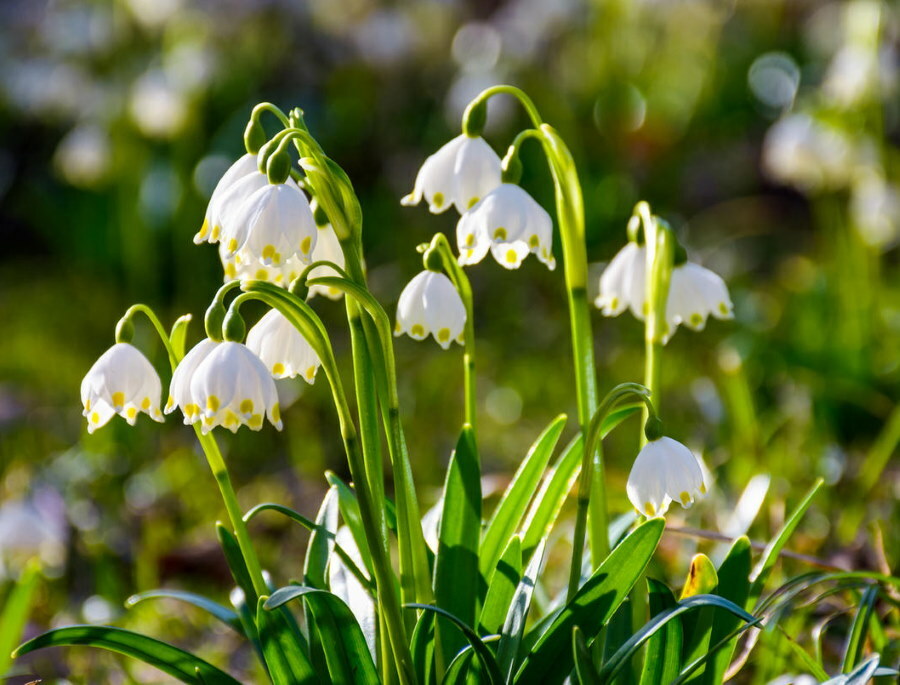
One of the first to appear on the flower bed is the spring white flower, which pleases gardeners with its milky bells with small spots on the petals.
These flowers do not like regular geometric shapes, they are impressed by randomness. There is one commonly practiced seating arrangement. All the bulbs that they want to plant are collected in a container. Turn their backs to the area where they are to be planted. They take a handful of bulbs and throw them over their shoulder. Where the tuber fell, it is planted.
It is necessary to take into account several important nuances to create a laconic design when planting bulbs in the garden:
- Neighborhood.
- The color range of plants.
- Lighting of the landing site.
- Soil quality.
- Flowering time.
For garden design, bulbous garden flowers are used in the following elements:
- On the curbs. When combining them with other plants, you need to take into account the fact that the flowers in the neighborhood will have to decorate the place after the bulbs have faded. In this case, the nearby plants should be tall and the bulbous should be low in size. With this combination, keep the order with perennials and shrubs.
- On the lawn. In the event that the lawn is not decorative. Bulbous plants are planted on the lawn in a creative mess, as mentioned above, they "do not like" the correct forms.
- Plastic containers. In this case, you can create a composition from your preferences. The main thing is that there are holes in the container for the excess liquid to escape.
- In the flower beds. A winning and convenient option is to plant low-growing flowers in the front, and tall ones in the back.
- Alpine slides. It is better to use low varieties such as tulips and daffodils on them.
Planting in a container is a very convenient option! You can place them on a street gazebo, terrace, porch, in the creation of flower beds. After the plant has faded, it is enough to simply remove the container and plant a new flower in its place.
Hyacinths can be planted near the gazebo. During rest, they will delight their owners with a charming and pleasant scent.
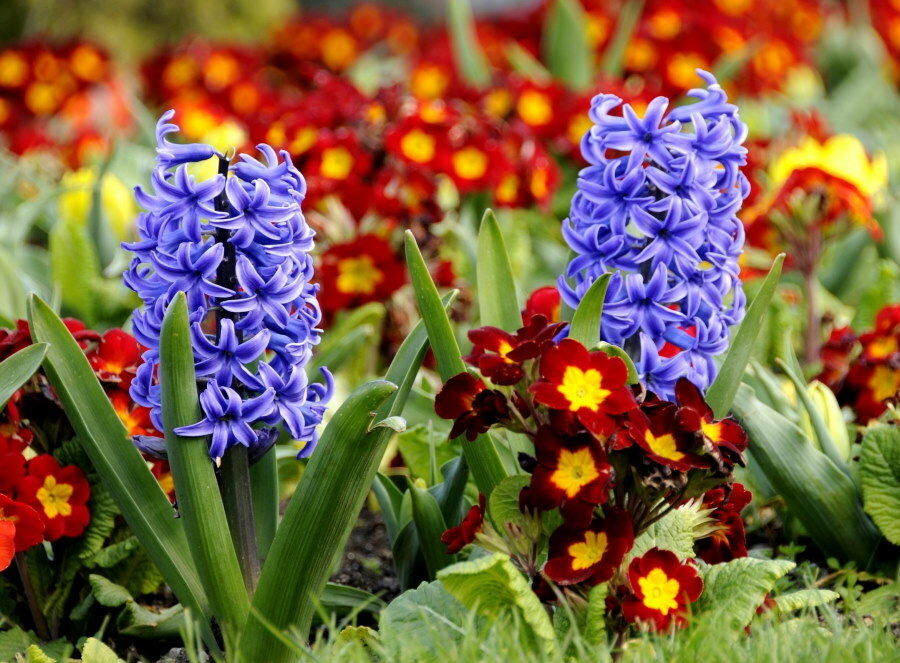
Hyacinths are very bright in color and look great both in small groups of 10–20 specimens, or singly. Their combination with lower colors of contrasting tone will look especially impressive.
When creating a design from perennial bulbous flowers for the garden and vegetable garden, it must be borne in mind that colors play an important role. In creating graceful garden compositions, you need to combine warm and cold shades. When creating a project for your site, fix one color throughout the garden. The classic and winning color combination is three colors with one basic.
Plant growth plays a significant role in landscape design. You can create different compositions and color combinations, but you must take into account: flowers change their height and all plants have different flowering times. For example: crocuses and snowdrops wither quickly, you need to pay attention to this when planting.
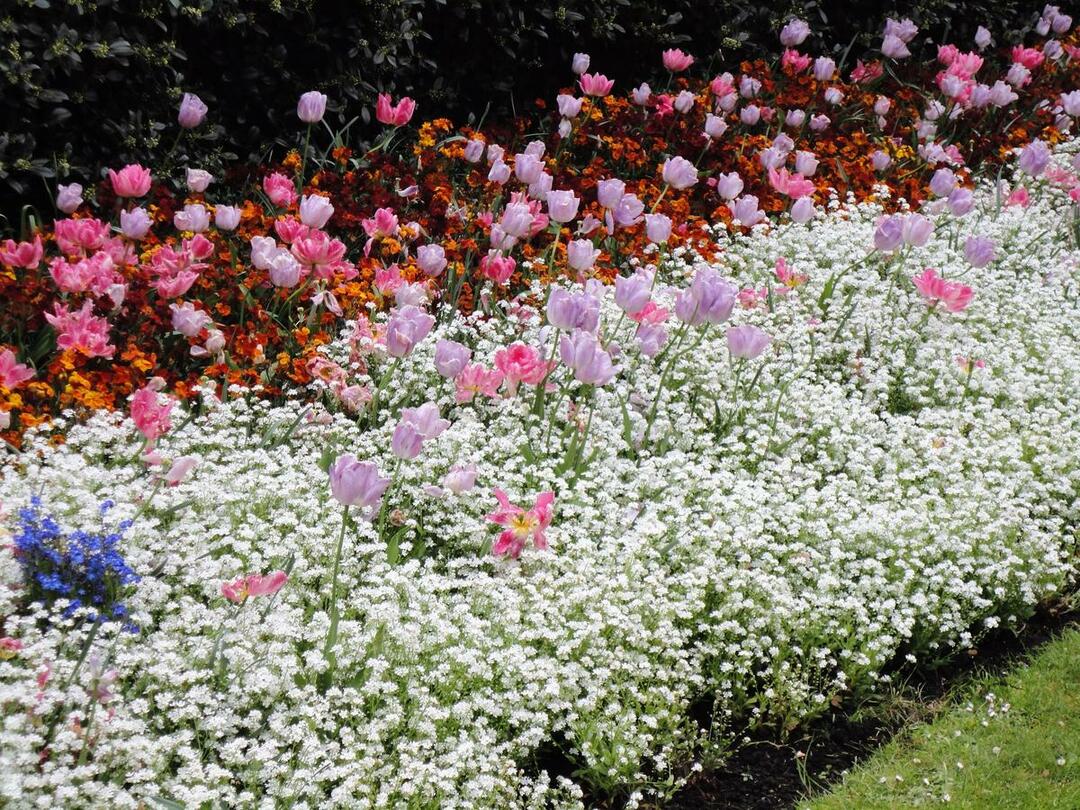
Low companion flowers help to diversify the planting of bulbs, which bloom at about the same time and serve as an excellent background
Features and main qualities of bulbous flowers
Bulbous flowers are generally unpretentious to care for. But each subspecies has its own characteristics. To grow intensively and the plant does not "hurt", you need to adhere to certain rules and know the preferences of plants.
There are two seasonal types of flower planting:
- Spring (planted in autumn).
- Autumn (planted in spring).
When planting a tuber in the ground, the correct depth must be taken into account. It makes up three of the same bulbs.
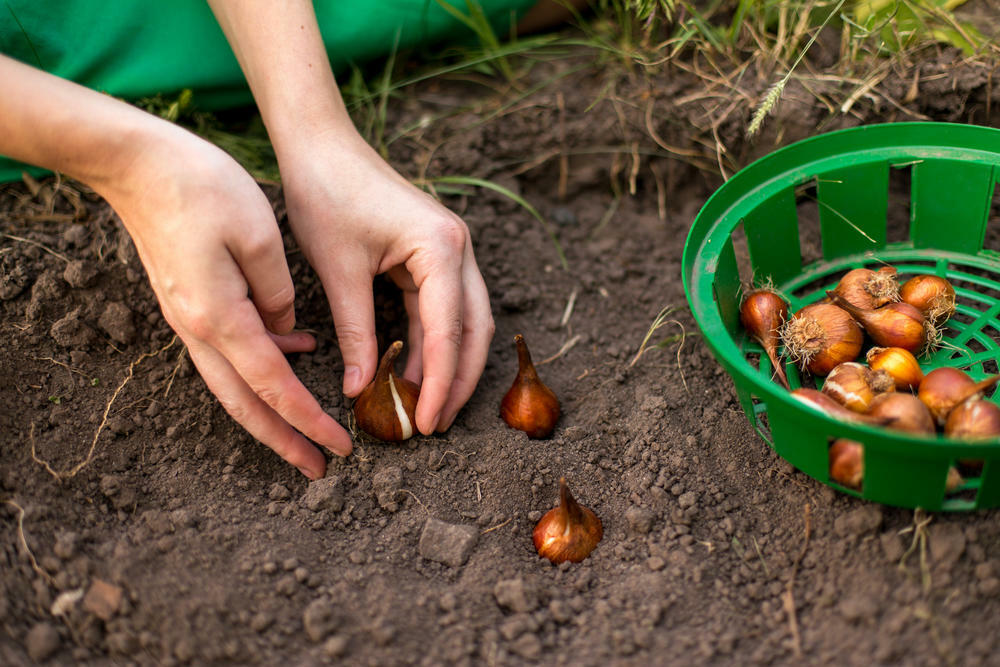
The planting depth should be adjusted based on the soil composition. On loose soil, the bulbs eventually go deeper, and on heavy soil they may not break through a too thick layer of earth
The tuber must be:
- no cuts;
- without processes;
- heavy;
- not damaged.
If the onion still has a shoot, it must be planted in the ground as soon as possible!
Before planting, it is better to keep the onion in a manganese solution for half an hour.
It often happens that the tubers multiply in the ground. A ball is formed that needs to be planted. This is done after flowering. Dig in a ball and carefully, without damaging, separate the tubers. The bulbs are then stored or planted in the ground.
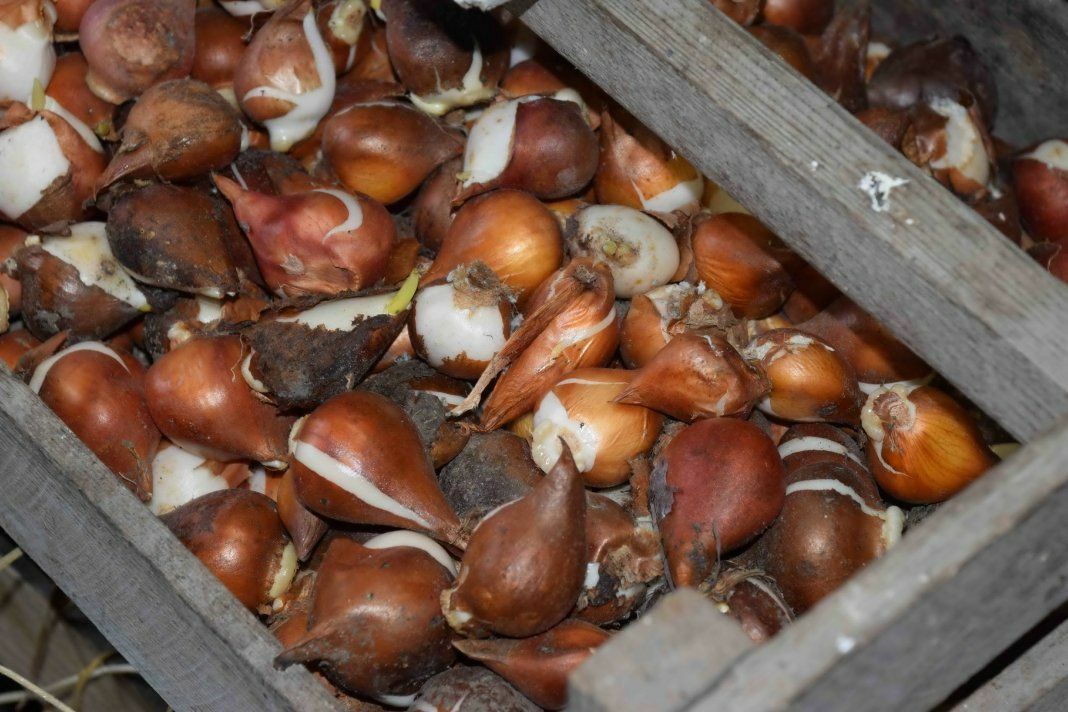
Before storing, the bulbs must be sorted out and dried in the shade.
For better flower growth, it is better to use fertilizer. When planting, the bottom of the hole is fertilized and sprinkled with soil, then the tuber is planted.
Try not to let the bulb touch the fertilizer!
Then watering is done. Water your flowers abundantly in dry spring! Approximately 25 cm deep.
There are two ways of planting bulbous: single or assortment. Planting in groups, bright islands of flowers are formed on your site.
The base and the most important thing in the bulb is the bottom. A healthy scion is clean and rot-free.
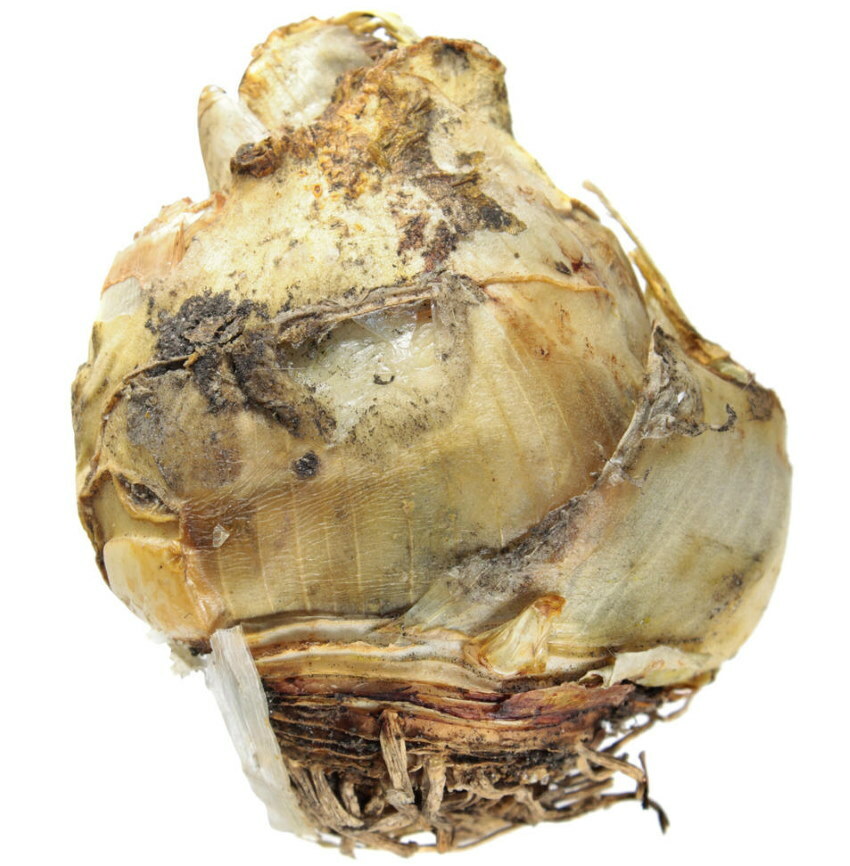
A healthy bulb should be free of damage and putrefactive areas.
If desired, the bulbs can be grown in winter. They are placed in a pot of soil and placed in a fairly cold basement (cellar). For 25-30 days before flowering, the pot is taken out to a warm and bright place. Flower bulbs can be grown at home or purchased from a store. By purchasing them, you will definitely enjoy their flowering, and whether it will continue further depends on the care of the plants.
Bulbs for planting must be purchased in stores from late July to September.
Wind, lighting, the presence of other vegetation, height are important factors when choosing planting material in a store.
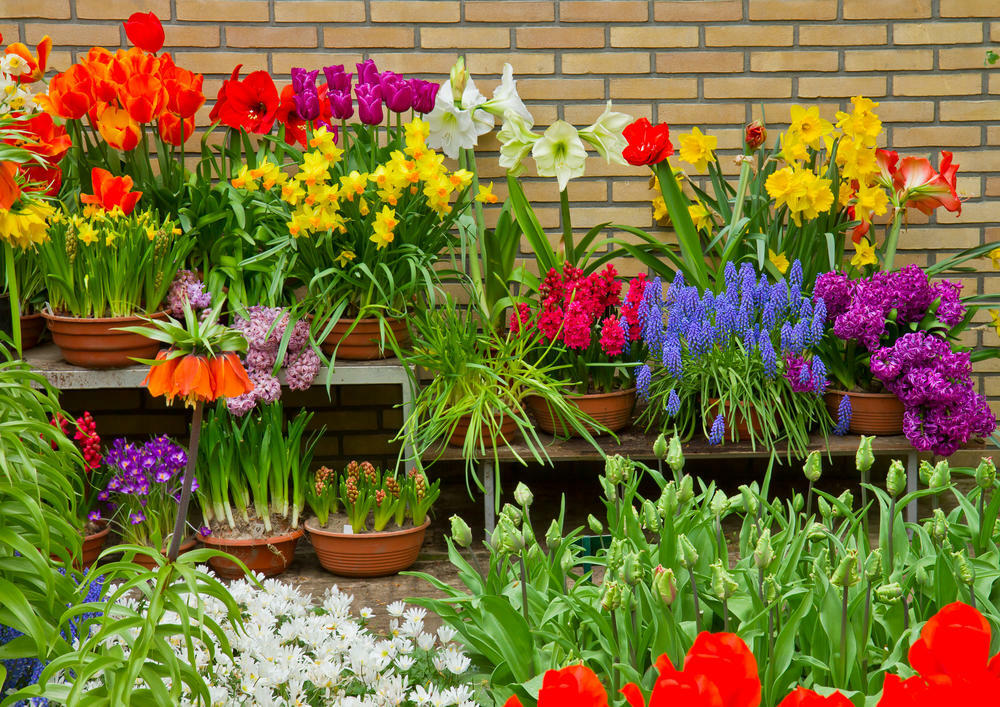
Almost all bulbous flowers can be grown in containers
Rules for growing bulbous
- Land for planting should be light and well-drained. Bulbous plants begin to "ache" from the abundance of water. Add river sand to the soil.
- In one place, they can grow for 4-5 years.
- Bulbous precursors in a flower bed cannot be bulbous.
- Plants do not tolerate manure as fertilizer. Choose mineral supplements.
- Withered petals should be cut off with scissors.
Planting flowers depending on the territory of Russia:
- in Siberia - at the end of summer or in September;
- in the Northern regions - in October;
- in the southern regions - in November.
The plant should have a root system. The most important thing is to plant 6 weeks before the morning frost.
Digging up the bulbs for the winter is optional. For example, in Krasnodar, tubers are not harvested for the winter because of the warm weather. In Moscow, they are dug up, as the temperature drops below 10 degrees.
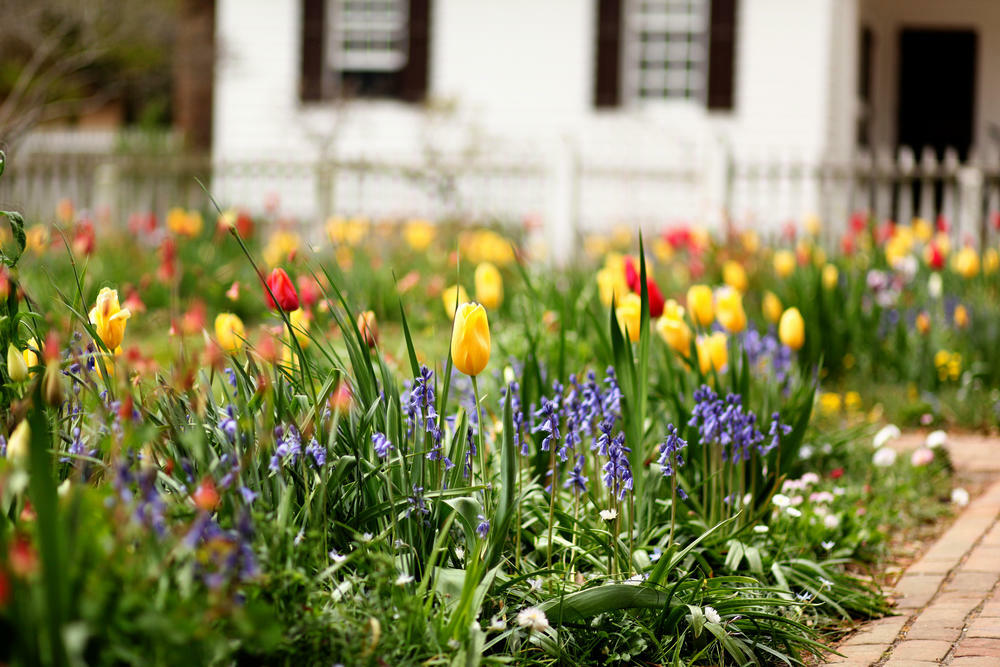
Bulbous plants can be planted directly on the lawn. Flowers will appear here in the spring, and a green lawn in the summer.
Popular perennial types and varieties of bulbous flowers
Bulbous flowers are divided into 3 types: amaryllis, onion and lily.
Spring flowering perennials (primroses)
- Lily of the valley. Feels good in the shade. Easy to clean. It should be borne in mind that it grows throughout the territory. To prevent overgrowth, you need to put in a barrier. For example, garden tape.
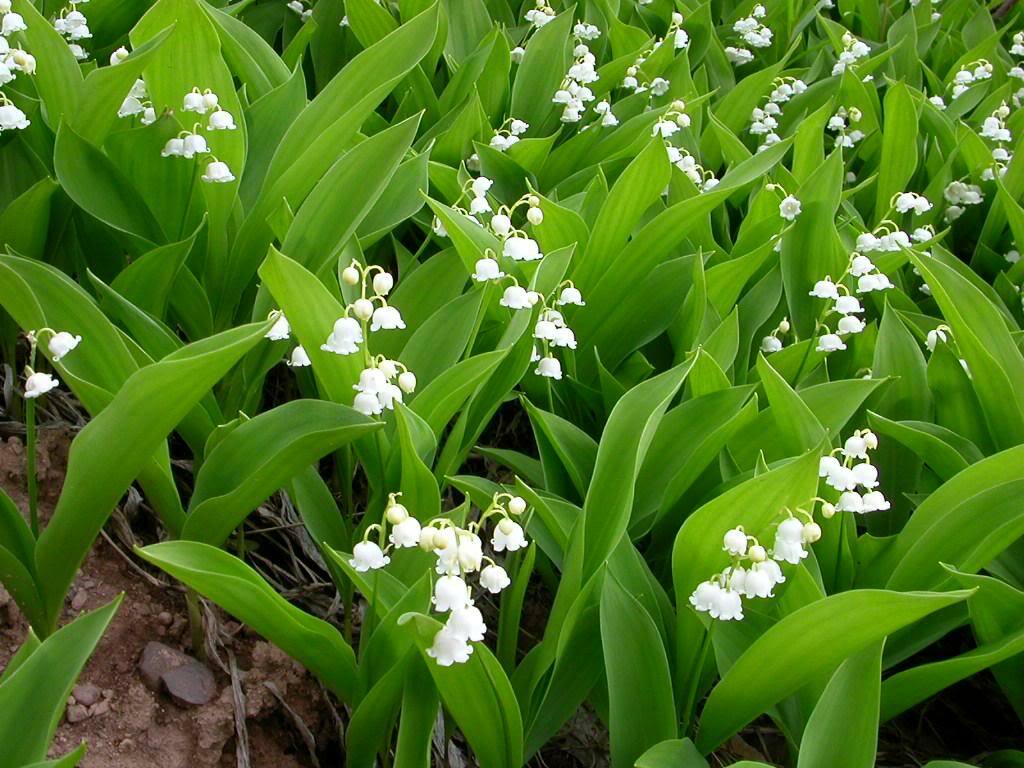
Lilies of the valley - a real find for a shady garden in a landscape style
- Tulip. Need to be fertilized and watered during flowering. Flower varieties are presented in a large assortment of shades. Plant height ranges from 10-100 cm.
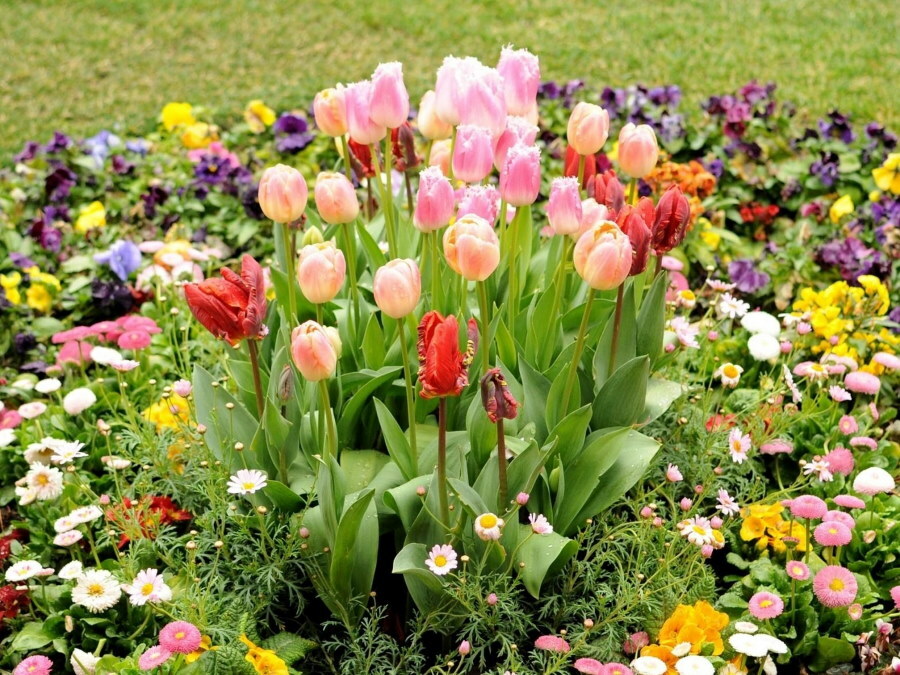
Tulips are able to stay in one place for a long time, gradually expanding through the flower bed
- Grouse. Tall flower with large inflorescences. It blooms for about 3 weeks. It is presented in a variety of shades: red, yellow, white and lilac. There are more than 150 varieties of the flower.
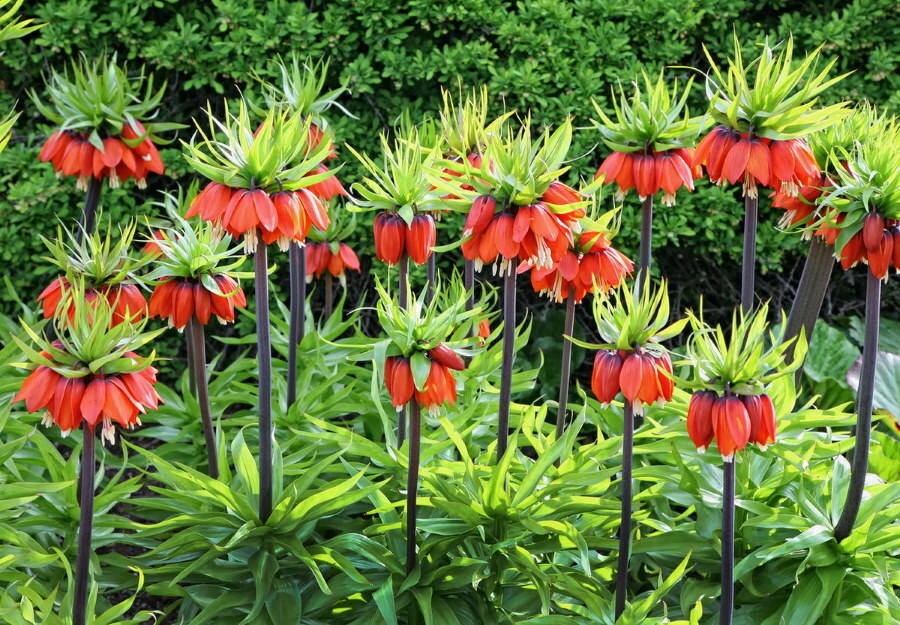
In order for the hazel grouses to bloom annually, the bulbs are dug out after flowering and returned to the garden at the end of summer.
- Crocus (saffron). Low-growing plant. Height no more than 10 cm. Homeland - Central Asia. By color, they are divided into two types: blue-flowered and yellow-flowered. There are also flowers with "albino" colors.
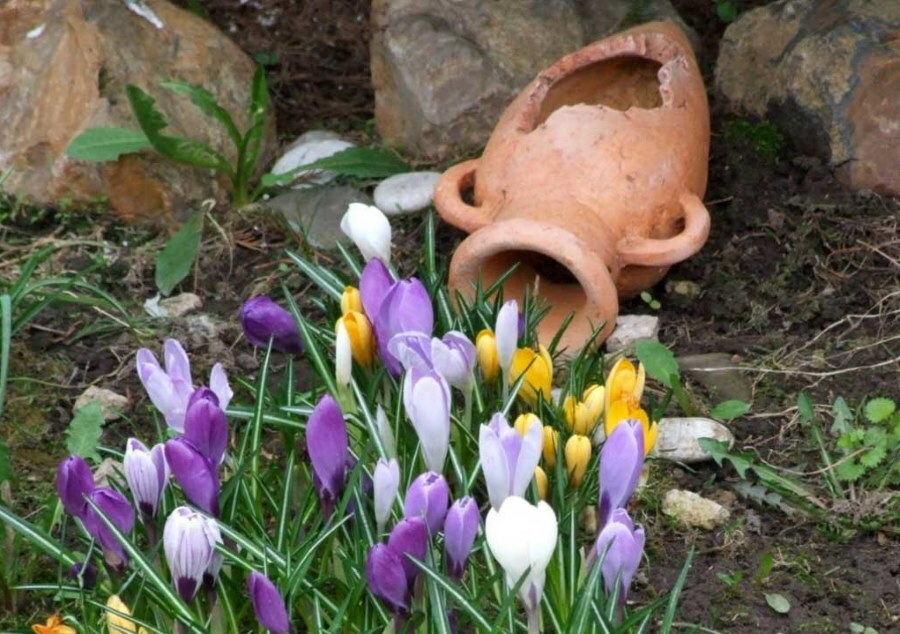
Crocuses are the most popular among small-bulbous perennials. Place them along the edges of flower beds and on alpine slides.
- Scylla (scrub). There are over 90 types. The flower is frost-hardy and rarely gets sick.
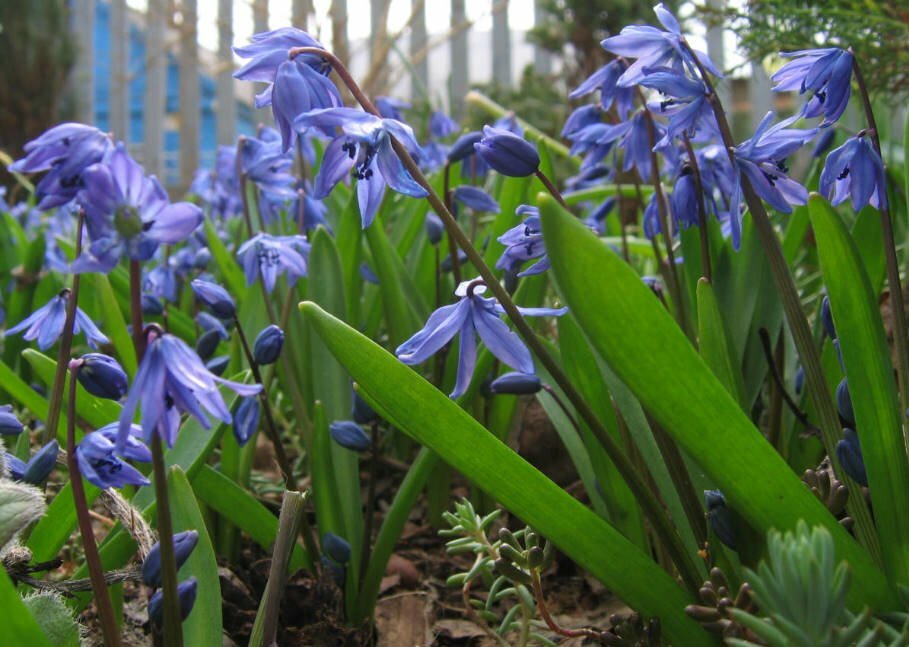
Scylla loves neutral or slightly acidic soils, rich in humus.
- Narcissus. There are over 60 types. Their buds are always directed in one direction. Unpretentious care.
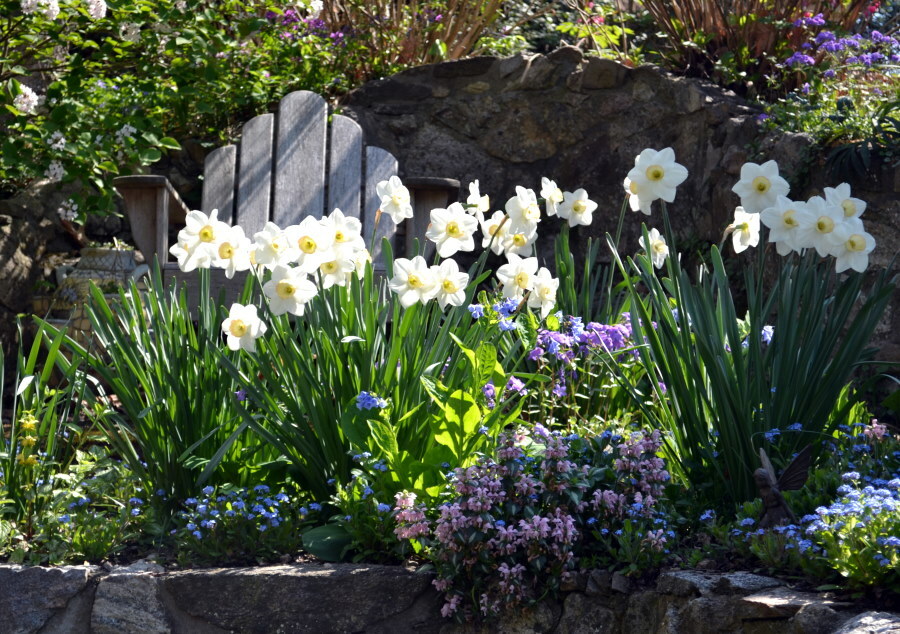
Daffodils can be planted in a flower garden of any style, in near-stem circles, as well as in compositions with tulips and hyacinths
- Iris. Prefers a dry, sunny location. Doesn't need additional watering. Homeland - Asia. There are more than 250 species. The height reaches 70 cm.
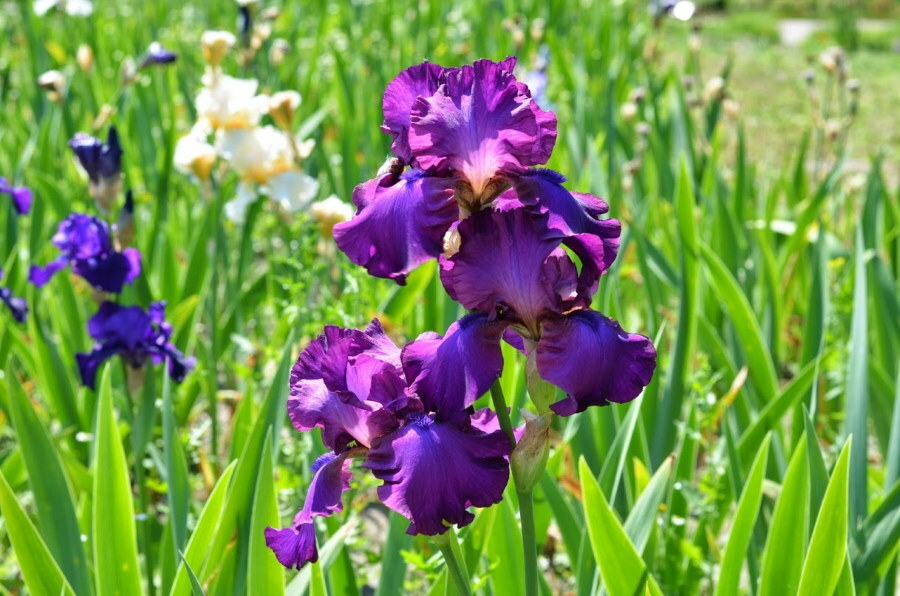
Irises are not demanding to care for, they are planted on rockeries, in curbs and along the banks of reservoirs
- Erantis (spring-worker). Plant height reaches 25 cm. Available in yellow and white. Flowering lasts 14-20 days. They prefer a sunny side and a low-lying location.
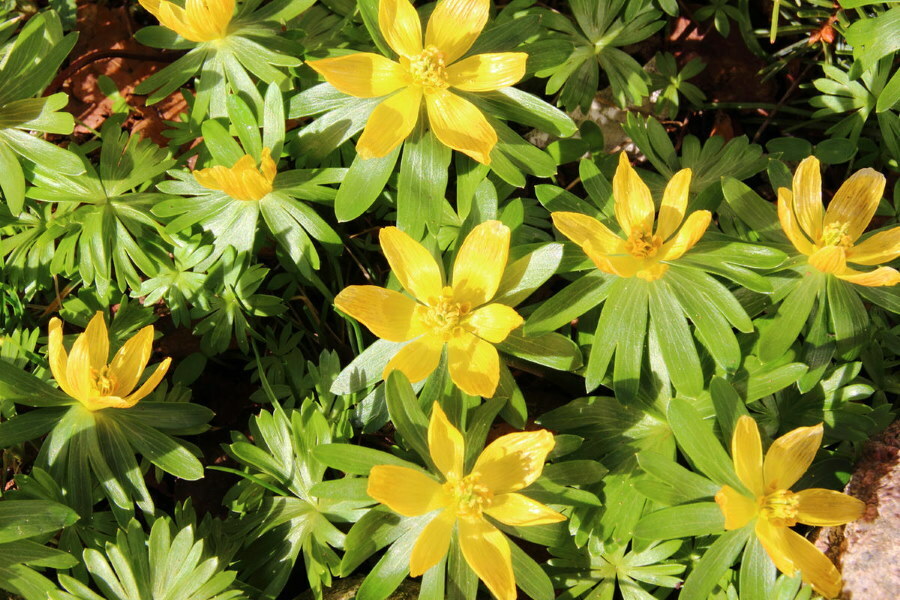
Vesennik can grow in one place for a long time, from year to year delighting with its flowering
- Snowdrop. Height up to 11 cm. Flowers need moisture for abundant growth. Unpretentious. Grows well both on the sunny side of the site and in the shade.
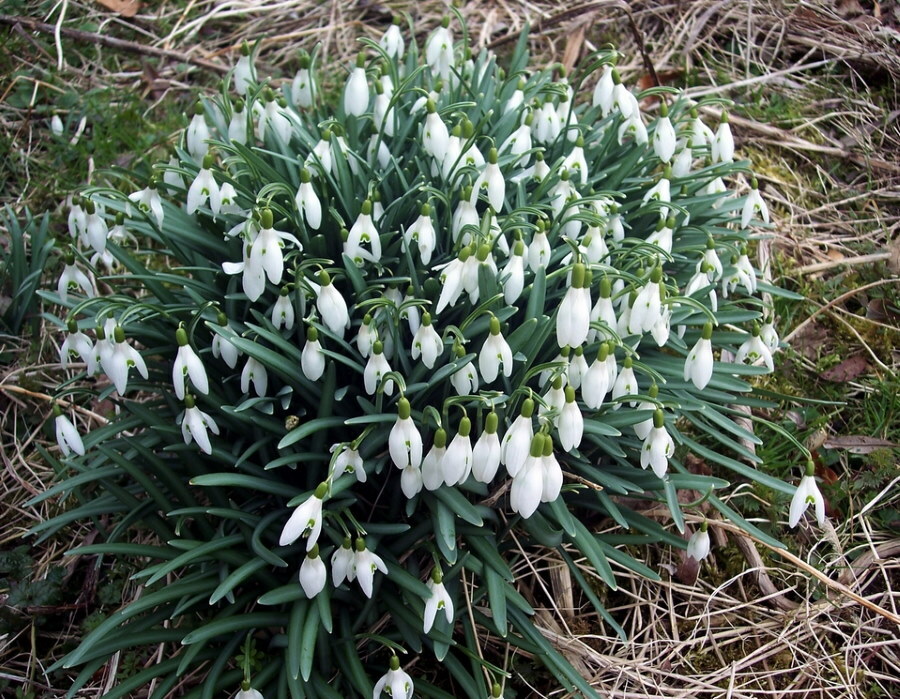
Snowdrops will decorate the site at the earliest possible date, and they will need to be replanted every 5-7 years
Summer flowering perennials
- Day-lily. Prefers being in partial shade. Unpretentious care. There are over 60,000 species. Height 40 cm - 1.25 m. Blooms within 2-5 weeks, depending on the variety.
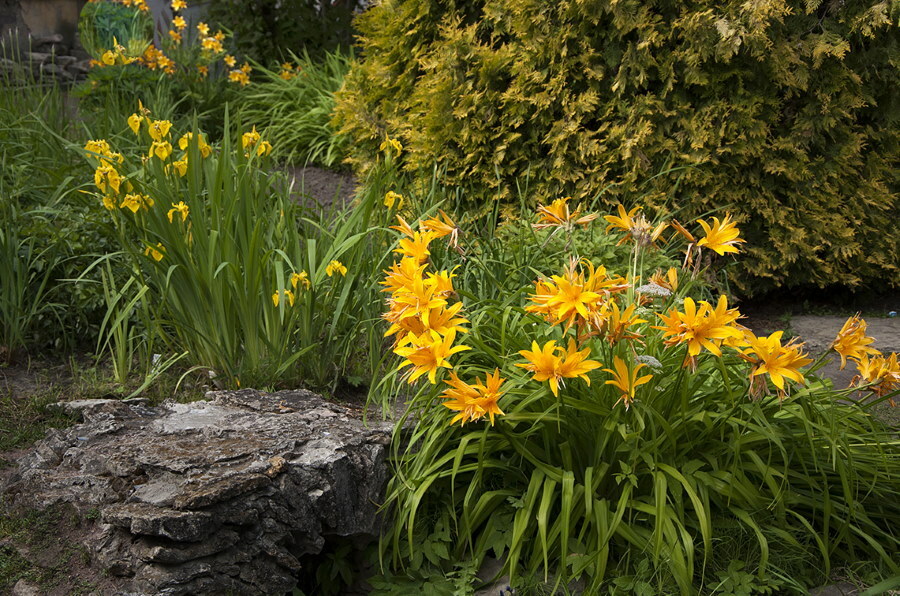
Daylily petals range from light yellow to reddish brown
- Garden lily. There are over 3000 species. Has a huge variety of color options. For abundant flowering, it needs the warmth of the sun.
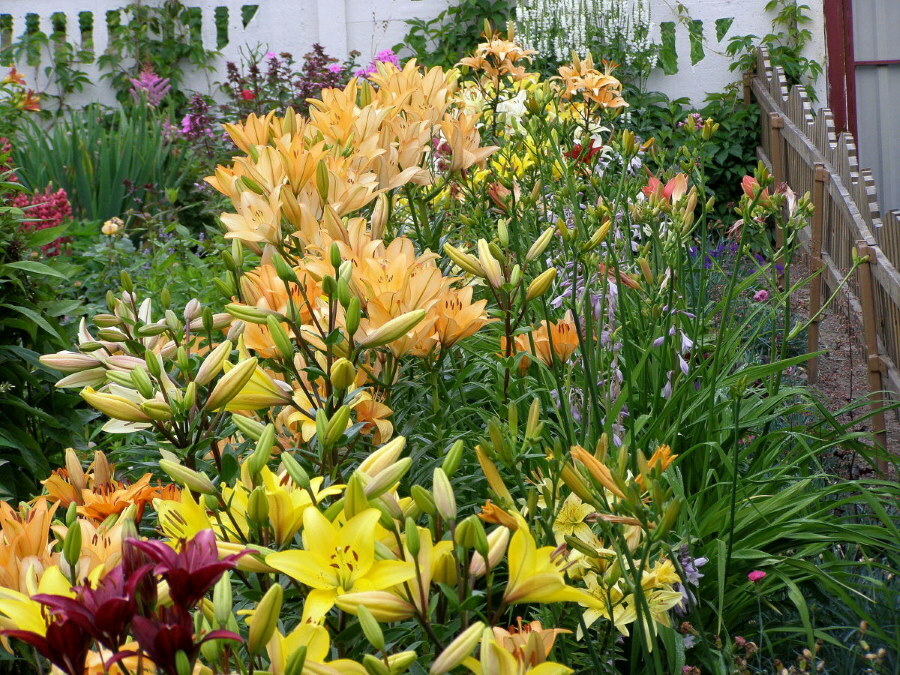
Garden lilies are planted in August-September if they want to achieve early flowering. Planting can be postponed to April-May, but the flowering time will shift.
- Gladiolus. Loves the reverent care of the gardener. Needs good sunlight. Homeland - Asia and Africa. Height 40-80 cm.
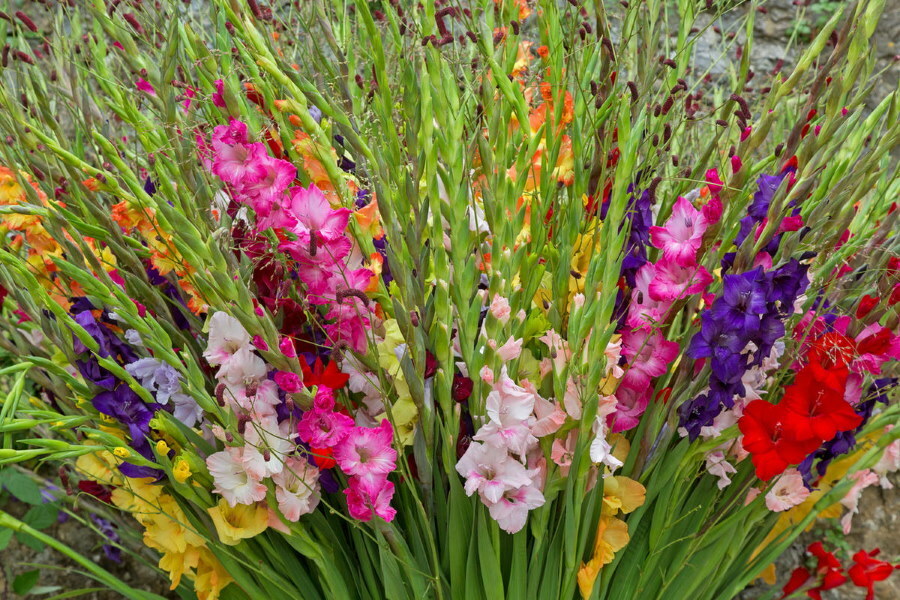
Gladioli, depending on the variety, will decorate the garden from June to October
- Allium is a decorative bow. Its huge advantage is long flowering, more than a month. The ability to grow in mixborders and as a frame for flower arrangements.
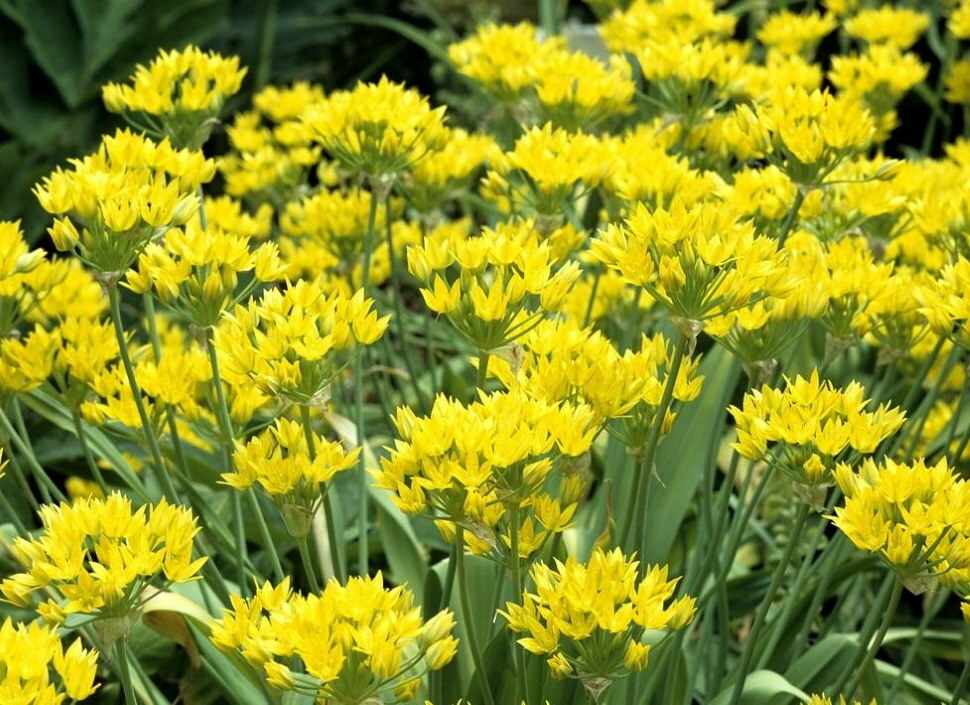
Decorative bow is the best fit for a natural style garden
Perennials of autumn flowering
- Colchicum (Colchicum). The height reaches 20 cm. There are over 70 kinds of flowers.
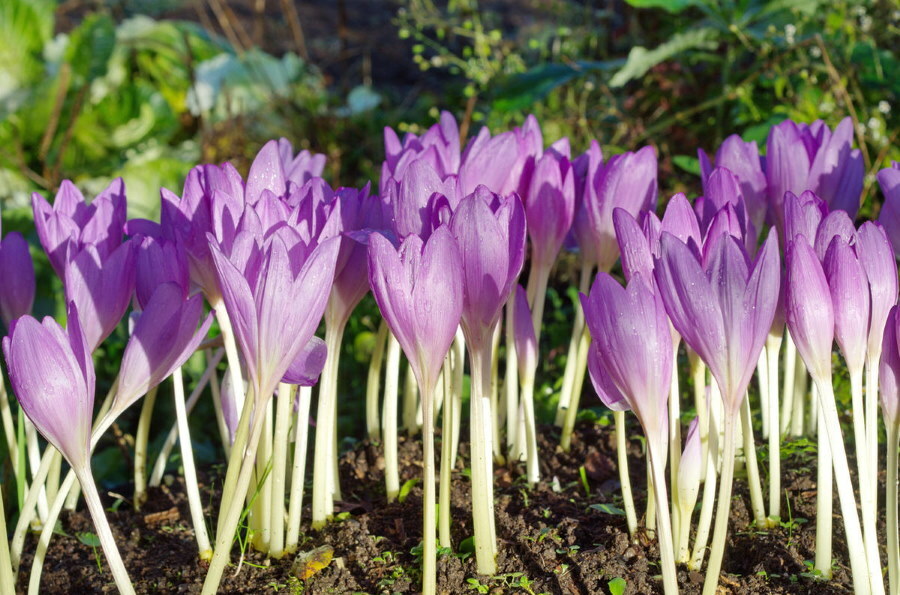
If you plant a crocus in mid-August, you will see it bloom this season.
- Crocosmia (Montbrecia). More recently, it has earned popularity among gardeners. It has large leaves and inflorescences up to 5 cm.
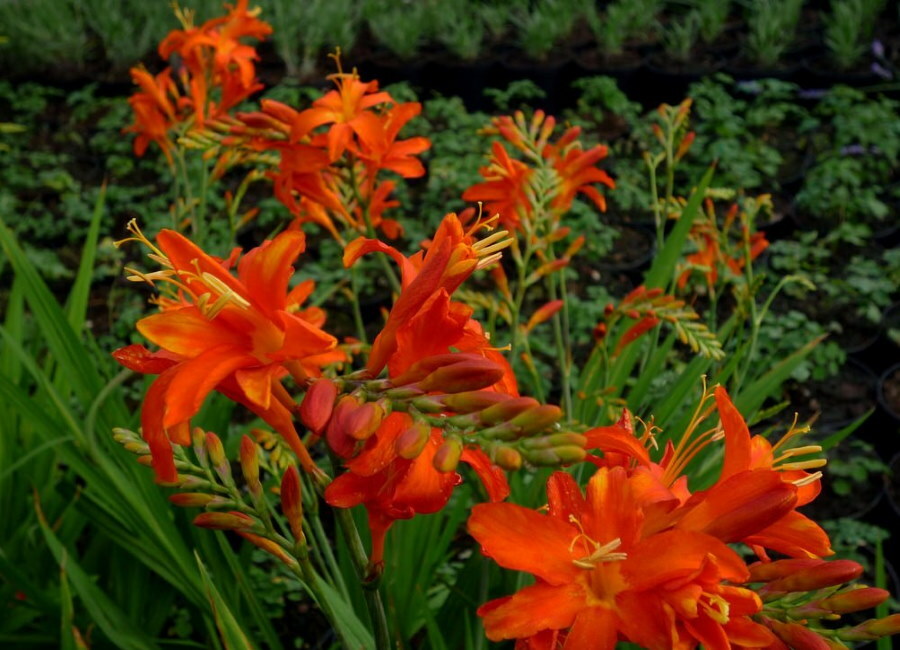
Abundant flowering of these perennials begins in the middle of summer and lasts until September, and even longer in warm autumn.
- Sternbergii. Susceptible to cold, therefore they are gaining wide popularity in the southern regions of Russia.

Up to 10-12 bright yellow, lemon-colored flowers bloom on one peduncle of sternbergia
The types and varieties of perennial garden bulbous flowers are diverse in their shapes, shades and sizes. Each gardener will find a flower to his liking from a huge assortment and will be able to create his own unique chic garden.
Video: Rules for planting perennial bulbous flowers
Photo of perennial bulbous flowers



